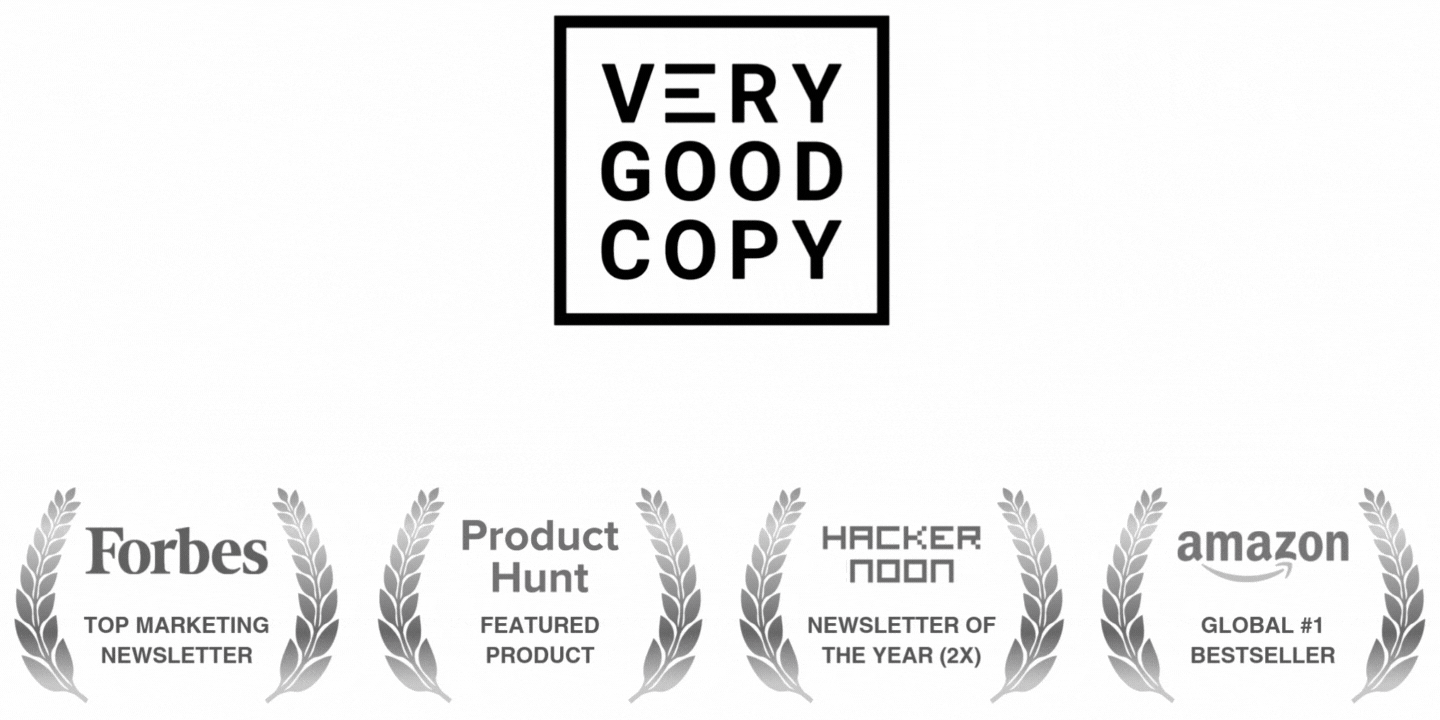Enjoy 207 micro-lessons inside VeryGoodCopy: The Book →
550 words on
Vignettes:
A vignette is a short passage that captures a moment, a scene.
First example:
In fifth grade, I got a Nintendo 64. My favorite game was GoldenEye 007. It’s a first-person shooter. I was James Bond. It was me against the Russians.
Babushka watched me play for weeks. Then, one day, she said, “You’re shooting Russian soldiers in this game.”
I heard her, but I wasn’t listening. I played dumb. “They’re Russian?” I said.
Babushka didn’t say anything. She just sat, watching me shoot the 64-bit polygons, the Russians, sometimes in the torso, sometimes in the chest or the shoulder or the head. Sometimes in the neck. When they were shot in the neck, the soldiers clutched their throats and struggled, silently, crumpling to the ground and dying. And then they immediately disappeared. Death was very clean in GoldenEye, very neat. Babushka watched this.
“So what?” I said. “We’re not Russian.”
My family lived in Kyiv for generations until 1989. Ukraine and Russia were still united when we left. In 1986, when Chernobyl happened in Ukraine, millions of Russians came to aid the cleanup.
“No, we’re not,” she said, “but Russians are still our people.”
“Eto nashi lyudi,” she said. “These are our people.”
This never left me. And now, I’m thinking about it more than ever. Now, confronted with images on TV of the brutality, the viciousness of war—for the Ukrainians, of course, and also for the Russians—the profound sacrifices being made by both sides in this colossal tragedy, this complete and utter fucking waste of life.
“Eto nashi lyudi.”
Dear God.•
Babushka, trying to tell me something.
Second example:
Mom pulled out the photo album. We sat at the table and flipped through the pages. She stopped on a picture. “This was our last apartment before we left,” she said. “It’s the last place we lived in Kyiv.”
“Which building?” I said.
“On the left.”
“This one?”
“Da, the yellow one.” She tapped on the picture. “This was our balcony.” She tapped somewhere else. “This was our window, and this one, too.”
I studied the building. “I didn’t know that,” I said.
“Da, da,” she said, “you lived there.”
I took the picture out of its sleeve and looked at it. Mom reached across the table for a napkin. She folded it in her hand. “I just hope nothing happens to it,” she said.•
My first home.
Third example:
I turn on the music. The first song is Unchained Melody. I let it go.
It plays as I lay down on the carpet next to the dog bed. Sydney’s in there. She’s being sweet. Elvis is singing in the background.
“Oh, my love…my darling…”
I scratch behind her ear. She looks tired, and old.
“Time goes by so slowly…and time can do so much…”
I look at her leg.
It’s busted now.
She limps now.“Lonely rivers flow…to the sea, to the sea…”
Oh, Sydney girl.
“Godspeed your love…to me…”•
Sydney girl.
As a copywriter:
I’ve found writing vignettes to be great practice because it teaches you how to zoom in on a moment, how to tighten that moment or expand it. A vignette is compelling on its face because it’s emotional. It’s also practical, lending itself to the perspective of modern readers:
“Quick, make me feel something.”








